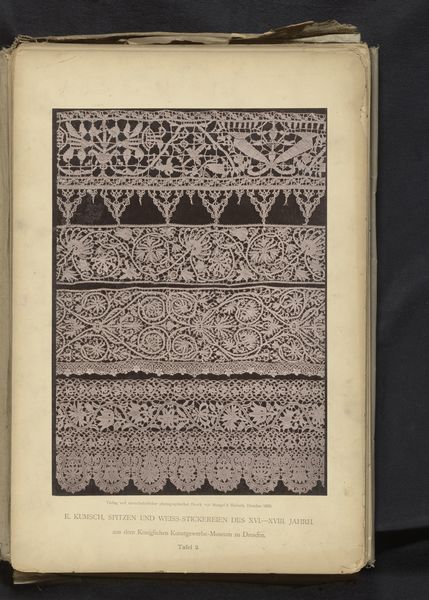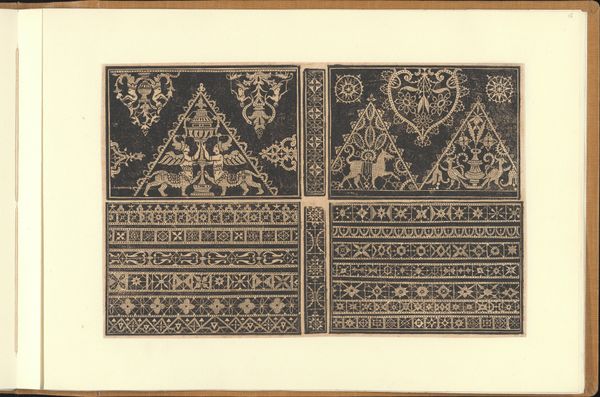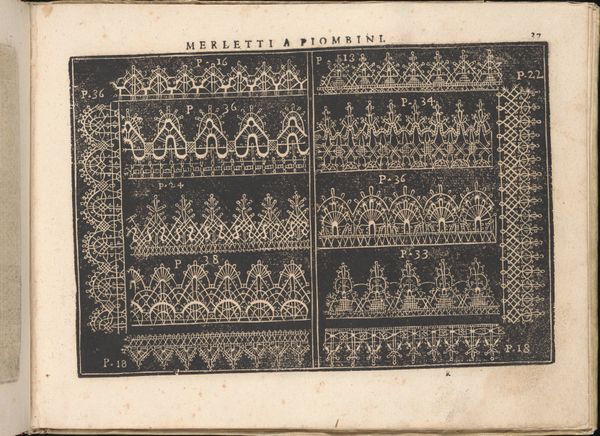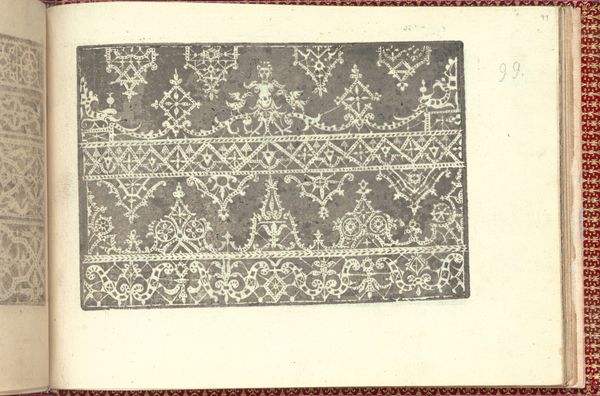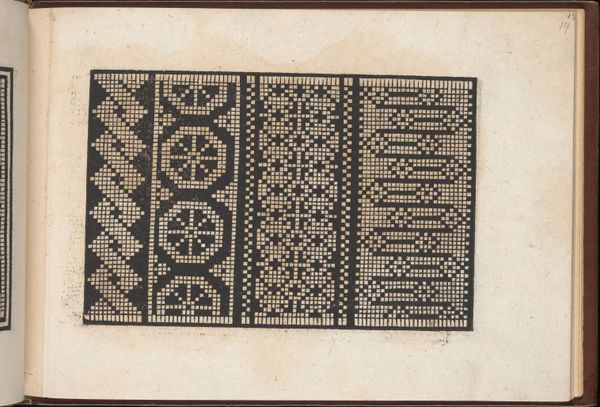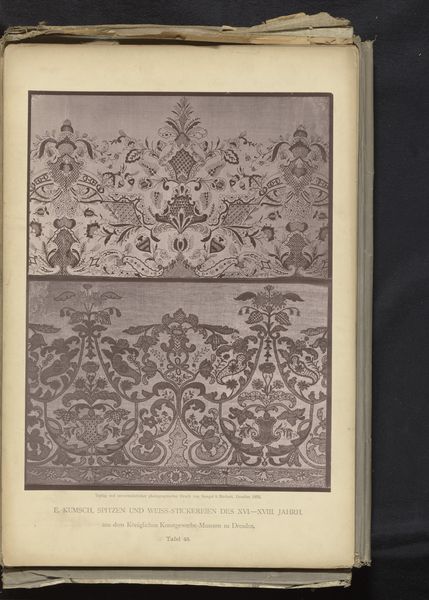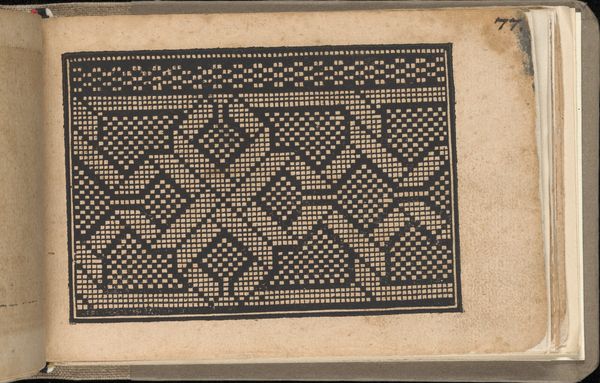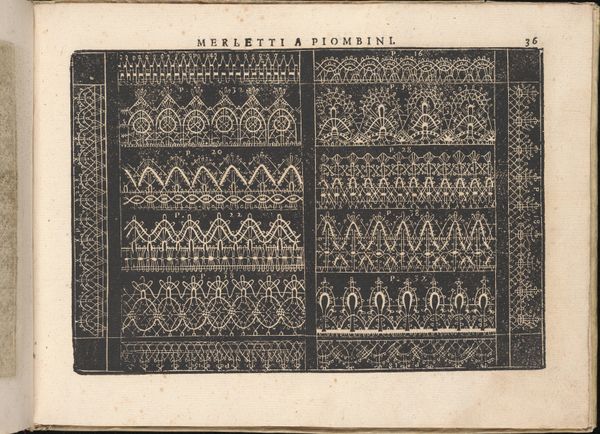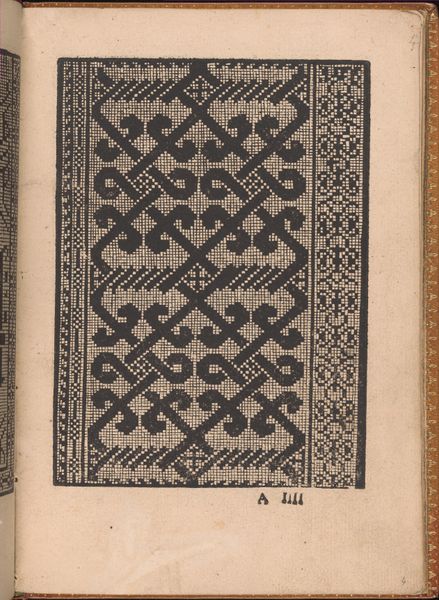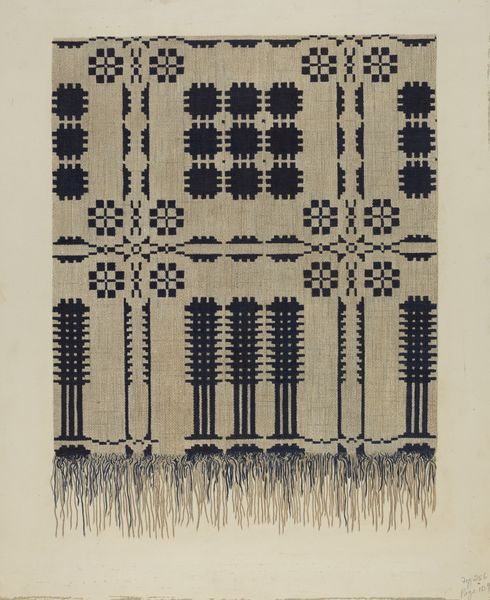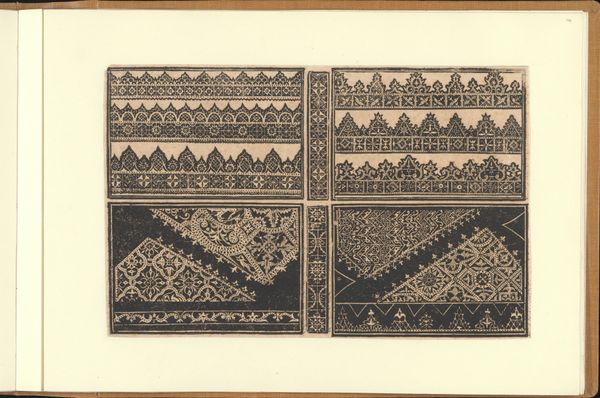
Negen stukken Italiaans kant uit circa 1620, uit de collectie van het Kunstgewerbemuseum in Dresden 1888
0:00
0:00
anonymous
Rijksmuseum
mixed-media, print, textile, engraving
#
mixed-media
# print
#
textile
#
historical fashion
#
decorative-art
#
engraving
Dimensions: height 344 mm, width 243 mm
Copyright: Rijks Museum: Open Domain
Editor: This print from 1888 showcases “Negen stukken Italiaans kant uit circa 1620, uit de collectie van het Kunstgewerbemuseum in Dresden," nine pieces of Italian lace. There’s something very austere and delicate about it. How would you interpret this work, focusing on what it might have meant to viewers in 1888? Curator: Considering the date, I see an intense fascination with history, wouldn’t you agree? The revival of craftsmanship, almost a desperate attempt to reconnect with a perceived golden age. Lace, of course, isn't just fabric; it represents status, skill, and a certain kind of refined femininity. Editor: Refined femininity? It almost feels like a yearning for a bygone era, but reproduced for mass consumption as a print. Curator: Precisely! The print makes these rare artifacts accessible. Think about the symbolic weight: the ephemeral nature of lace itself versus the permanence of the print. The contrast highlights how cultures strive to preserve beauty and craftsmanship, wrestling with the inevitability of change and loss. The choice of Italian lace specifically suggests an aspiration towards classical ideals and artistic mastery. What emotional response do these intricate patterns evoke for you? Editor: A sense of longing, definitely. They also convey patience; you imagine someone painstakingly crafting each piece. Curator: Right! Each knot is a story, a connection to the past, reproduced here, sparking our modern anxieties of technological progress. The question then is: What continuities and cultural memories do such images transmit through time? Editor: That’s fascinating, I didn’t consider that these reproductions carried so much weight about both the past and anxieties about the future. Thank you! Curator: My pleasure! Exploring cultural memory within artifacts like these unlocks so much.
Comments
No comments
Be the first to comment and join the conversation on the ultimate creative platform.
